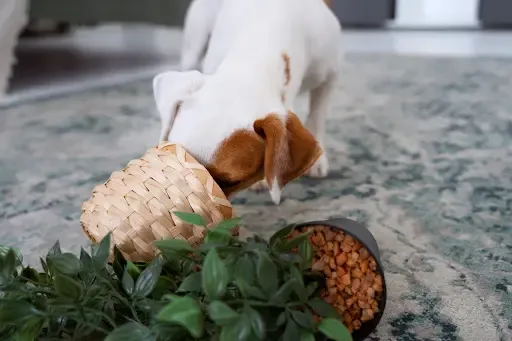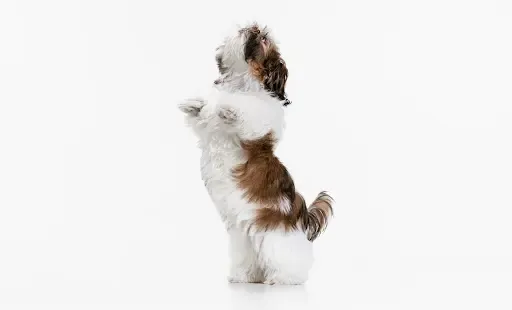Training your dog is one of the most enriching experiences you can share, fostering a deep bond, mutual trust, and a clear understanding between you and your furry companion. Far beyond mere obedience, it’s a journey that enhances your dog’s safety, confidence, and overall well-being. From mastering basic manners to performing impressive tricks, there are countless Things You Can Train Your Dog To Do that will not only impress your friends but also make daily life more harmonious and enjoyable. This comprehensive guide from Dog Care Story will walk you through essential commands and fun tricks, empowering you to cultivate a well-behaved and happy dog.
Why Dog Training is Essential
Dog training extends beyond just teaching commands; it’s about building a language and a connection. A well-trained dog is a safer dog, less prone to running into traffic or getting lost. It’s a calmer dog, better adjusted to various social situations and less likely to exhibit unwanted behaviors like excessive barking or jumping. For you, the owner, training brings the joy of a responsive companion and the satisfaction of overcoming challenges together. Embracing positive reinforcement methods in training significantly strengthens your bond, turning every session into an opportunity for connection and fun.
Essential Tools for Effective Dog Training
Before diving into specific commands, it’s important to equip yourself with the right tools. These simple aids amplify your effectiveness and make the learning process more enjoyable for your dog:
- A Clicker: This small device provides a precise sound marker that tells your dog exactly what behavior they’re being rewarded for. The moment your dog performs the desired action, click, and then immediately follow with a reward. This clarity helps your dog understand the connection between their action and the positive consequence, speeding up the learning process for all the wonderful things you can teach your dog.
- High-Value Treats: Treats are a powerful motivator for most dogs. They should be small, soft, and palatable, something your dog truly loves. Use them generously in the initial stages of training, gradually reducing their frequency as your dog masters a command and finds intrinsic reward in pleasing you. Always have treats readily available during training sessions to ensure prompt positive reinforcement.
Fundamental Commands Every Dog Should Know
These basic commands are the foundation of good behavior and are crucial for your dog’s safety and your peace of mind.
1. Come (Recall)
“Come” is arguably the most vital command for your dog’s safety. It teaches them to return to you immediately, regardless of distractions, which is essential when they’re off-leash or if they’re heading into a potentially dangerous situation.
To start, get your dog’s attention with a treat or a favorite toy. Once they’re focused on you, say “Come” in a clear, friendly, and enthusiastic voice. As they move towards you, offer praise and reward them with the treat the moment they reach you. If your dog is hesitant, you can gently guide them with a long leash. Consistent practice, even when your dog is engaged in play, will solidify this command.
2. Sit
The “Sit” command is incredibly versatile, useful for everything from politely greeting guests to waiting for their meal. It’s a foundational command that teaches impulse control.
Begin by holding a treat near your dog’s nose. Slowly move the treat upwards and backwards over their head. As their nose follows the treat, their rear end will naturally lower to the ground. The moment their bottom touches the floor, say “Sit,” click (if using a clicker), and reward them with the treat and praise. Practice in various environments to generalize the command.
3. Stay
 Golden retriever puppy practicing the stay command patiently
Golden retriever puppy practicing the stay command patiently
“Stay” is a critical command for safety, preventing your dog from bolting out of an open door or venturing into unsafe areas. It teaches patience and self-control.
Have your dog in a “Sit” or “Down” position. Extend your open palm towards them and clearly say “Stay.” Take one small step backward. If your dog remains in place, step back to them, click, and reward. Gradually increase the distance and duration of the “Stay” before releasing them with a cheerful “Okay!” or “Free!” command. Remember, consistency is key; dogs can be easily distracted, so regular practice is essential.
4. Potty Training
Potty training is often one of the first and most crucial things you can train your dog to do, especially for puppies. It establishes good hygiene habits and prevents accidents indoors.
The key to successful potty training is consistency and frequent outings. Take your dog out at regular intervals – first thing in the morning, after meals, after waking from naps, and before bedtime. Always take them to the same designated “potty spot.” When they eliminate, praise them enthusiastically and offer a treat. Do not punish accidents; instead, clean them thoroughly and interrupt any attempts to go indoors by immediately taking your dog outside.
5. Quiet
The “Quiet” command helps manage excessive barking, ensuring a peaceful home and public outings.
When your dog barks (e.g., at a doorbell), let them bark a few times. Then, hold a treat near their nose. The moment they pause their barking to sniff the treat, say “Quiet,” click, and reward them. If they start barking again, remove the treat and repeat the process. With practice, you can introduce the “Quiet” command before they even start barking when you anticipate a trigger.
6. Lay Down
“Lay Down” is a calming command, useful for settling an overly energetic dog or preparing them for a “Stay.”
Start with your dog in a “Sit” position. Hold a treat in your hand and move it slowly from their nose straight down to the floor, then drag it slightly forward, between their paws. Your dog should follow the treat with their nose and lie down. As they lay down, say “Lay Down,” click, and reward. Practice this frequently until they respond reliably.
Fun & Useful Tricks to Strengthen Your Bond
Once your dog has mastered the basics, you can move on to more engaging and entertaining tricks. These not only provide mental stimulation but also deepen your connection. Many of these are considered the classic tricks you should teach your dog.
7. Let Go (Drop It)
The “Let Go” or “Drop It” command is invaluable for preventing your dog from chewing on inappropriate items or releasing something harmful.
Start with your dog holding a low-value toy. Offer a higher-value treat in exchange, saying “Let Go” as they release the toy. As soon as the toy drops, click and give them the high-value treat, then quickly give the toy back. Gradually, your dog will learn to drop items on command, knowing a better reward is coming.
8. Find (Search Game)
 Energetic dog happily searching for hidden treats during a find command game
Energetic dog happily searching for hidden treats during a find command game
The “Find” command is a fantastic mental exercise that taps into your dog’s natural sniffing abilities, helping them locate specific objects or hidden treats.
Begin by letting your dog watch you hide a treat under a cup or a visible cloth. Say “Find!” and encourage them to search. Once they find it, praise them enthusiastically. As they get the hang of it, you can hide treats in more challenging spots around the house, gradually increasing the difficulty. This is a great way to offer mental stimulation and practice problem-solving.
9. Give Paw (Shake)
“Give Paw,” or “Shake,” is a charming trick that teaches your dog to offer their paw.
Have your dog in a “Sit” position. Hold a treat in your closed fist. When your dog tries to get the treat, they might paw at your hand. The moment their paw touches your hand, say “Give Paw,” open your hand, click, and give the treat. Repeat this until they consistently offer their paw.
10. Hi-5
Similar to “Give Paw,” the “Hi-5” trick is a fun way to interact with your dog.
Once your dog understands “Give Paw,” elevate your hand a little higher, encouraging them to lift their paw higher to touch your palm. Say “Hi-5,” click, and reward when they make contact. This builds on the previous command, making it a natural progression.
11. Roll Over
“Roll Over” is an impressive trick that showcases your dog’s agility and responsiveness.
Start with your dog in a “Lay Down” position. Hold a treat near their nose and slowly guide it in an arc over their head towards their shoulder, encouraging them to roll onto their back to follow the treat. As they roll, say “Roll Over,” click, and reward them the moment they complete the action. This can be one of the more engaging things you can train a dog to do for an audience.
12. Speak
The “Speak” command teaches your dog to bark on cue, which can be useful for alerting you or simply for fun.
When your dog naturally barks (e.g., at a knock on the door), say “Speak!” just as they bark, click, and reward them. If your dog isn’t prone to barking, you can try to trigger a bark, then immediately mark and reward it. Eventually, they’ll associate the word “Speak” with barking.
13. Fetch
“Fetch” is a classic game that provides excellent physical and mental exercise, helping to tire out your dog and build their muscles.
Begin by throwing a favorite toy a short distance. When your dog retrieves it, entice them back to you with praise or another treat, then say “Give” or “Drop It” to encourage them to release the toy. Reward them when they drop it at your feet. Gradually increase the throwing distance and reduce the lure of a second treat as they learn to bring the toy back consistently.
14. Jump
 Small dog playfully jumping over an obstacle during trick training
Small dog playfully jumping over an obstacle during trick training
Teaching your dog to “Jump” (e.g., over a small obstacle or onto their hind legs) can be a fun way to channel their energy.
Hold a treat high above your dog’s head or slightly over a very low obstacle. Entice them to jump to reach it or clear the obstacle. As they jump, say “Jump,” click, and reward them mid-air or immediately upon landing. Start with very low heights and gradually increase them, ensuring safety at all times.
15. Play Dead
“Play Dead” is an impressive and entertaining trick that requires your dog to lie down and remain still.
Start with your dog in a “Lay Down” position. Hold a treat and slowly move it from their nose towards their shoulder, encouraging them to roll onto their side or back. As they do, say “Play Dead!” and reward them generously for staying still, even for a few seconds. Gradually increase the duration they stay “dead” before giving a release cue.
Advanced Skills for a Well-Rounded Dog
Once your dog has mastered basic and fun tricks, you can explore more complex behaviors that enhance communication and utility. These different things to train your dog can open up new levels of interaction.
16. Ring the Bell (Potty Communication)
This clever trick teaches your dog to communicate their need to go outside by ringing a bell.
Hang a bell near the door your dog uses to go outside. Every time you take your dog out to potty, gently tap their paw against the bell and then immediately open the door. When they potty outside, praise and reward them. Soon, your dog will associate ringing the bell with going outside, making communication much clearer.
17. Open & Close Doors
Teaching your dog to open and close doors can be incredibly useful and impressive, showcasing their problem-solving abilities.
This trick often starts with teaching them to pull a rope attached to the doorknob. Lure them with a treat to pull the rope or push the door open/closed, marking and rewarding each successful step. It requires patience and breaking the action down into very small, achievable steps.
18. Left/Right (Directional Cues)
Directional commands like “Left” and “Right” are advanced but extremely helpful, especially in crowded areas or during walks to navigate obstacles.
When walking, use a treat to lure your dog to move left or right, saying the corresponding command clearly. Reward them immediately when they follow the direction. Consistent practice during walks will help them understand and respond to these cues, enhancing their safety in busy environments.
19. Guard (Specific Scenarios)
The “Guard” command is an advanced skill that requires professional guidance and should only be taught to specific dog breeds with appropriate temperament and training. It instructs your dog to protect you or your property in certain situations.
This is not a trick for the average pet owner to teach at home. It involves highly specialized training from certified professionals to ensure the dog understands the nuance of the command, knows when to engage and disengage, and remains safely controlled. Mismanaged “Guard” training can lead to dangerous behavioral issues.
Making Training a Rewarding Experience
Training is a continuous journey that benefits both you and your dog. Remember these principles for ongoing success:
- Positive Reinforcement: Always focus on rewarding desired behaviors rather than punishing unwanted ones. This builds a positive association with training and strengthens your bond.
- Consistency & Patience: Dogs thrive on routine and clear expectations. Practice commands regularly in short, fun sessions. Patience is crucial; every dog learns at their own pace.
- Keep it Fun: Training should never be a chore. Incorporate games, vary your rewards, and keep sessions short and engaging to maintain your dog’s enthusiasm.
Conclusion
Embarking on the journey of training your dog is one of the most rewarding commitments you can make. By teaching them these essential commands and engaging tricks, you’re not just fostering obedience; you’re building a deeper understanding, enhancing their safety, and enriching their lives with mental and physical stimulation. From the foundational “Sit” and “Stay” to exciting tricks like “Roll Over” and “Fetch,” the things you can train your dog to do are limitless, paving the way for a happier, healthier, and more harmonious life together. Continue exploring new possibilities and celebrating every small victory. For more expert guidance and resources on dog care and training, be sure to visit Dog Care Story – your ultimate partner in canine companionship.
